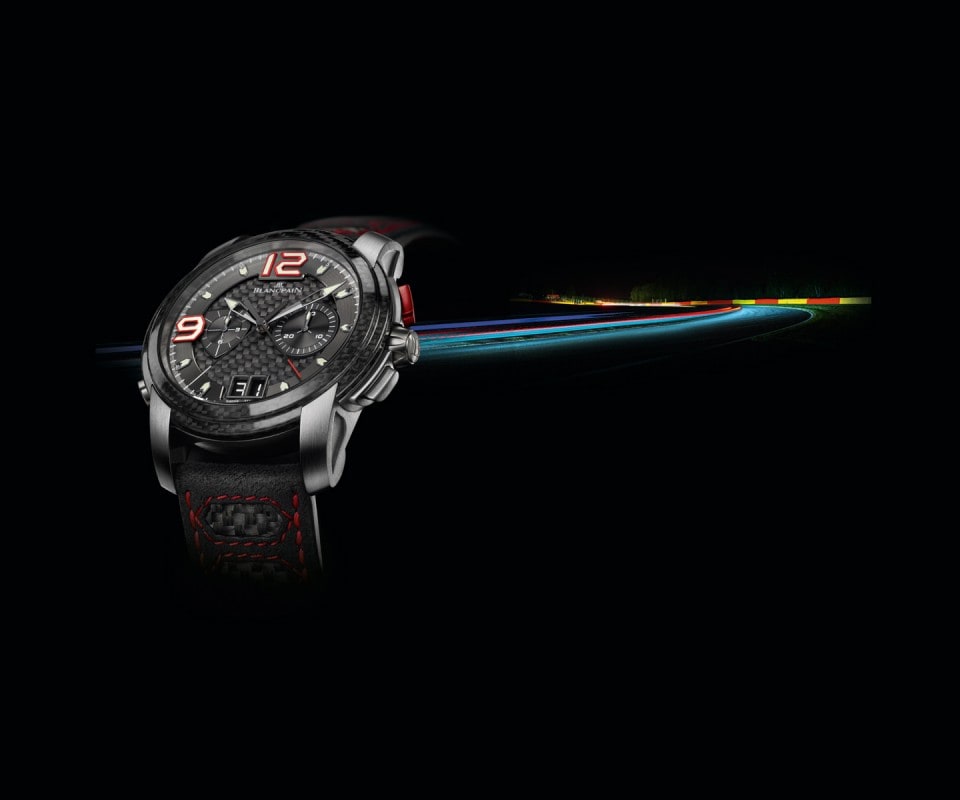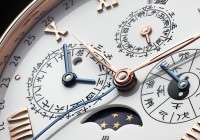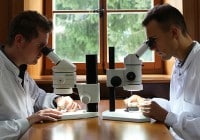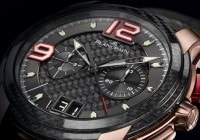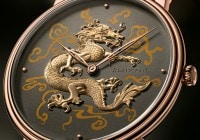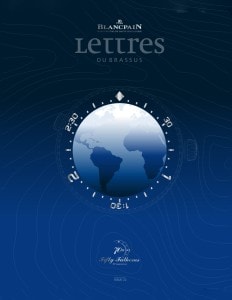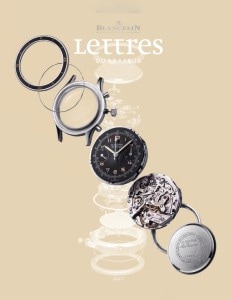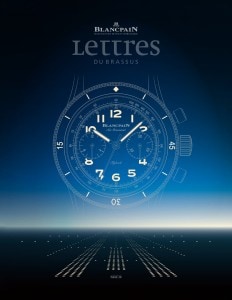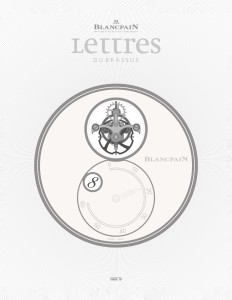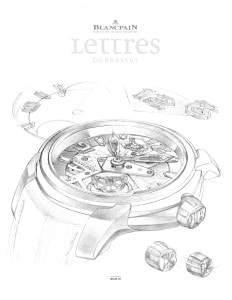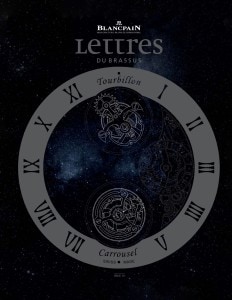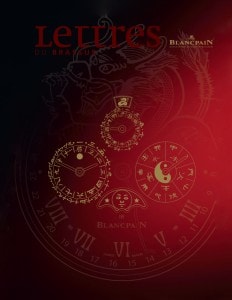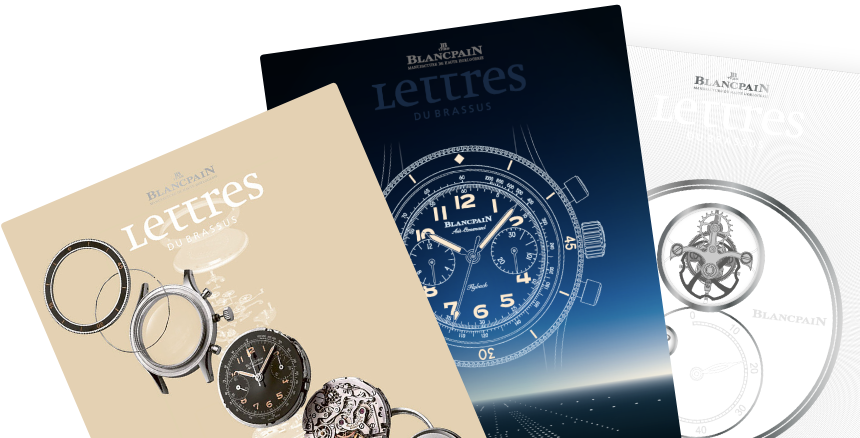
Search in Issues
Chapters
List of parts
Chapter 4
L-EVOLUTION R The grand complication of split seconds brought to sport
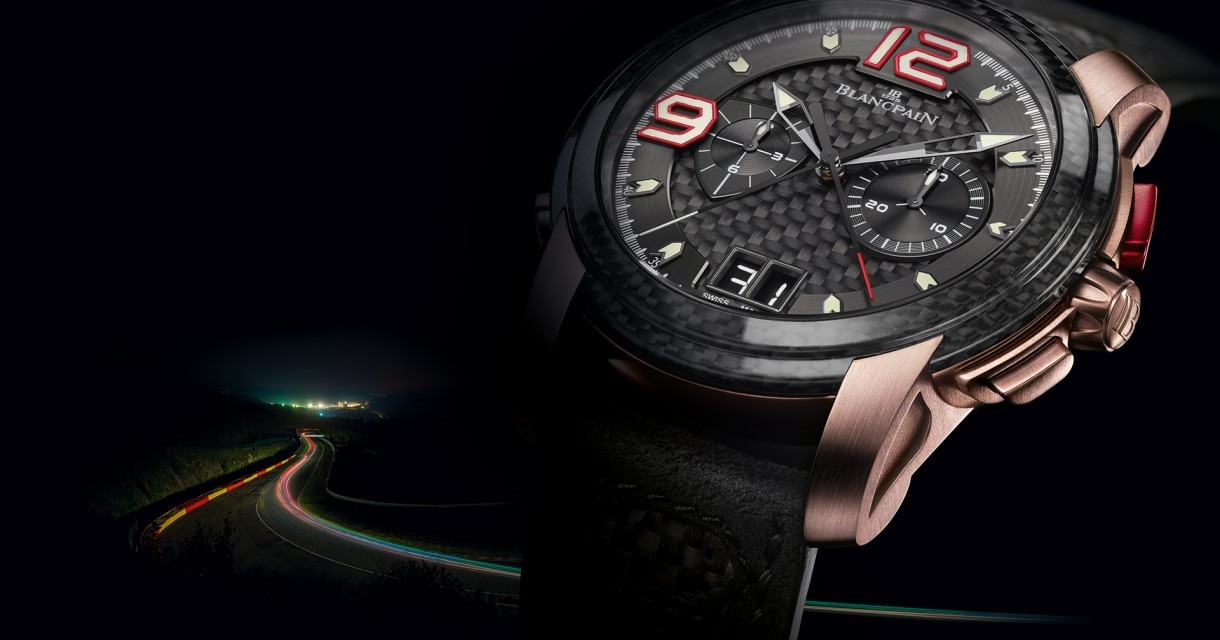
UNDERSTOOD BY WATCHMAKERS AND LESS SO BY THE PUBLIC: A SPLIT SECONDS CHRONOGRAPH IS A HIGH COMPLICATION.
"R-E-S-P-E-C-T find out what it means to me”. If you follow rock and roll even just a tiny bit, soul music diva Aretha Franklin has certainly seared those lyrics into your brain… all the way up to the final “sock it to me’s”. She should be hired to cut it loose and belt it out at a watchmakers’ convention to, as they say, show a little love on behalf of split second chronograph watchmakers everywhere. Even though these split second constructors labor over one of watchmaking’s most exacting, excruciatingly difficult, mind numbingly painstaking to get just right complications, somehow their craft and achievements seem to get short shrift in the grander constellation of complications. Simply not enough respect.
As we are plain spoken on these pages, let’s set the record straight. The realization of an haute horlogerie split second chronograph (in French watchmaking parlance, a chronographe à rattrapante) sits at the apogee of traditional watchmaking’s grand complications. Its difficulties and challenges far exceed those of, for example, perpetual calendars or tourbillons which generally provoke far more oohs and aahs from the grand stands.
Enter Blancpain’s newest split second chronograph, the L-evolution R. What elevates this new split second complication, and, for that matter, all of Blancpain’s split second timepieces to this watchmaking lofty perch? For one thing it begins with the challenges of a finely made chronograph. Axiomatic for watchmakers, and obscure to the public at large, is that constructing a high grade chronograph even before the addition of a split seconds feature is fraught with perils. This is because the chronograph mechanism subjects the running movement to harsh dynamic changes as the chronograph is started and stopped. These operations which occur suddenly and abruptly connect (the chronograph start) and disconnect (at stop) the chronograph componentry to and from the sensitive running train of the watch. At first blush, this can be imagined as simple. When the start operation is commanded, the mechanism of the chronograph itself—the chronograph seconds hand and the counters—is connected to the gear train of the watch, most commonly to the seconds pinion, and when stop is commanded, doing the opposite, namely disconnecting these components. What is fearsomely forbidding is to accomplish these connection and disconnection operations of start/stop (plus of course the third necessity for a chronograph which is the reset to zero) in a way which: 1. Does not disturb the regular time keeping of the watch (said another way does not produce a significant change in the amplitude of the balance wheel’s swing); 2. Provides, every single time without exception, a smooth start and stop to the chronograph hand’s motion absent any sudden jumps or jerkiness; 3. Endows the chronograph pushers which are used to command the operations with a silky creamy feel; 4. Permits constant engagement of the chronograph if the owner so desires; 5. Perfectly synchronizes the return to zero of the chronograph seconds hand and the other counters.
That is a tall order that must be satisfied for a chronograph to achieve greatness. Blancpain’s column wheel, vertical clutch chronograph, caliber 1185, stands in rarified atmosphere fulfilling all. Connoisseurs of chronographs who have personally tested examples from throughout the price spectrum from the most expensive to the most plebian have experienced this: models from prestigious brands that demonstrate occasional jumps of the seconds hand upon start/stop, suffer from changes in timekeeping with the chronograph running or which forbid constant operation of the chronograph; inexpensive models (and occasionally expensive models that utilize inexpensive movements-a bit of consumer deception in that) that exhibit
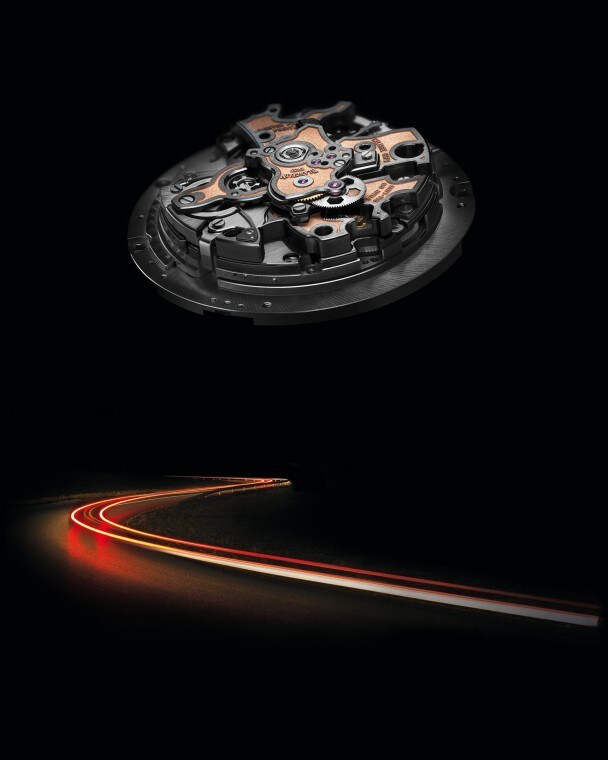
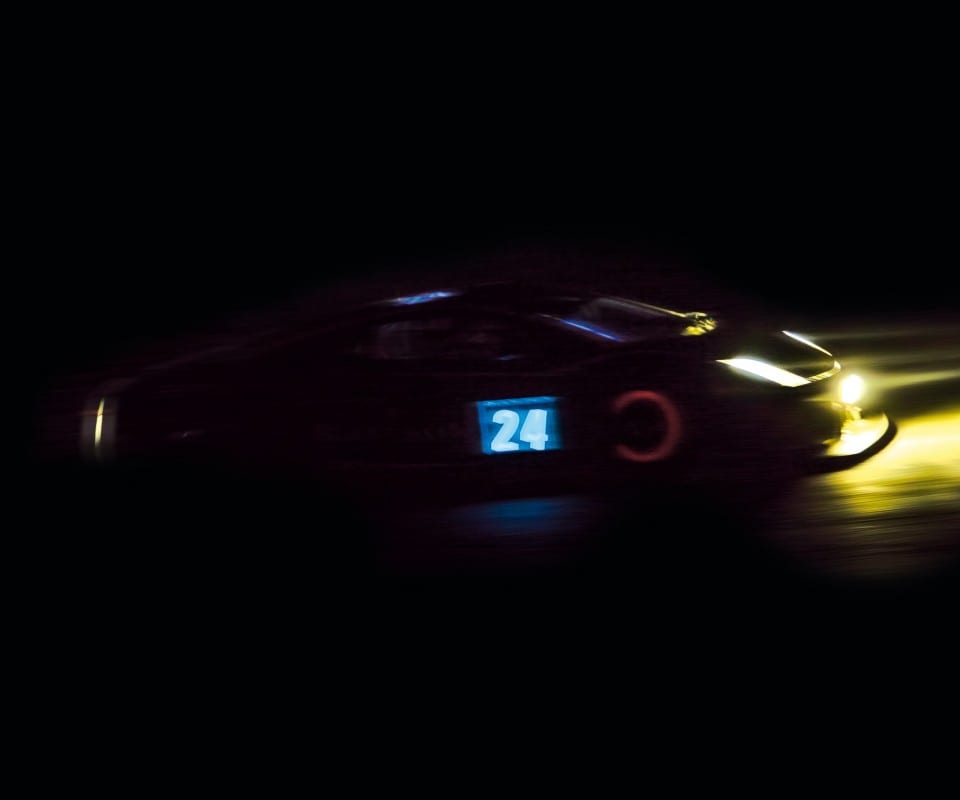
SPLIT SECONDS DEMANDS AND DESERVES A SOPHISTICATED CHRONOGRAPH BASE.
harshness when the pushers are actuated and which show changes in timekeeping. As a high complication, split seconds deserves a chronograph base that meets these standards without compromise.
However difficult it is to achieve perfection in the operation of the underlying chronograph, adding the split seconds feature is exponentially more challenging. A description of the split seconds functionality only hints at the magnitude of the step up in difficulty. Instead of one chronograph seconds hand there are two, which must be so perfectly superimposed upon each other so that in normal operation it seems as if there is only one hand. Then when the split is commanded, one of the hands is stopped while the other hand continues to run until a separate stop is commanded. This, of course, allows for the timing of two events. Thereafter, when the split button is pushed again, the formerly stopped hand flies back into position hidden beneath the other hand. This can be done either when the main hand is running or stopped.
There are two basic systems which lie at the core of implementing the split second function. The first is a means to center the hands together; the second is a braking mechanism that can be applied to one of the hands (the “rattrapante” ), leaving the other ( the “trotteuse”) free to continue its march around the dial.
Centering the hands. Actually, the centering of the hands together so that they are precisely superimposed one above the other, utilizes a component which for two hundred years has been a mainstay in nearly all chronograph designs. It is known as the heart shaped cam (“Cœur”). No mystery as to its construction as the name fully reveals what it is, a cam shaped not radically differently from a child’s drawing of a heart. The details are logarithmically calculated, of course, to optimize the property for which it is prized. If the heart shaped cam is left free to rotate and an arm or lever is pressed against it, the cam will always rotate to a position with the arm or lever nestled precisely at the top of the “heart”. Classic chronograph design calls for use of heart shaped cams for the return to zero of the chronograph seconds hand and any chronograph counter hands. When the return to zero is commanded, a hammer is pressed against the heart shaped cams of each chronograph hand and a precise return to zero is assured. In the case of the Blancpain caliber 1185, there is a single arm with two hammers, one for the seconds hand the other for the minute counter that simultaneously contacts the two hearts returning them both to zero at exactly the same instant.
TWO COLUMN WHEELS CONTROL THE FUNCTIONS OF THE L-EVOLUTION R.
The same property that is used for the return to zero is employed to keep the two separate seconds hands superimposed upon each other. The rattrapante hand has a heart shaped cam attached to its axis. When pressure is applied to it—with Blancpain’s design the pressure is applied by an arm with jeweled roller at its tip (referred to as a “gallet”)—the rattrapante hand is positioned in perfect alignment with the trotteuse. As the jeweled roller and its arm are attached to and rotate with the trotteuse, the centering is always made relative to the position of the trotteuse. If the two hands have been split apart because the rattrapante hand has been stopped, re-application of pressure from the jeweled roller will instantly rotate the rattrapante back into perfect centered position under the other hand.
The brake. The principle of the brake is simple. Its implementation is complex. A wheel is affixed to the axis of the rattrapante hand. When it is desired to stop that hand, splitting it from the other (which would continue to rotate and count the chronograph seconds) two arms, one on each side, resembling pliers, squeeze onto the wheel stopping it in place. If mechanical design is one of your avocations, this description of the means by which the rattrapante hand is stopped while the other continues running should raise an immediate question: “What about the jeweled arm pressing against the heart shaped cam? Won’t there be abnormal drag created as the cam is forced to rotate away from the position with the roller in the center of the heart’s trough?” Those are good questions and spot on in their insights.
Most split second implementations simply make do with this extra drag and tolerate the rotation of the heart against the pressure being applied to it. That, however, adversely effects the timekeeping of the watch as the extra drag will reduce the amplitude of the balance wheel’s swing. To counteract that, Blancpain was the first to invent the isolator which it incorporates into the split second mechanism. When the split is commanded and the brakes applied to stop the rattrapante hand, the arm bearing the roller which otherwise would press against the heart is pulled away from contact with the heart. Voilà! No extra drag is added by reason of a roller pushing against the cam. This Blancpain innovation has now been copied by others, one historic Geneva brand candidly admitting the “inspiration” which it took from Blancpain’s design!
One other component of the split mechanism merits attention, the column wheel. The chronograph itself utilizes a column wheel to control start, stop and return to zero. No chronograph can lay claim to being top grade if it lacks the sophistication of column wheel control, which endows a precision in the sequence of functions and a creaminess in the feel of the pushers which cannot be achieved in any other way. The same is true of the split second function; use of a column wheel to control the splitting and re-centering of the hands is vital in the same way to the precision and silky feel of the split mechanism. Thus, two column wheels are used in Blancpain’s movment.
One other sophisticated feature has been incorporated into the movement design of the L-evolution R, the flyback. The origins of this function trace back to time/distance calcuations by pilots. Before modern GPS systems removed the need for aviators to actually navigate with their brains (excuse the deliberately edgy commentary from an old school flight instructor), timing the course of a flight from waypoint to waypoint was required. This meant starting a chronograph upon crossing a waypoint, stopping it as the next one was reached, resetting to zero and restarting the timing in anticipation of the following waypoint. Thus, each intermediate waypoint necessitated three chronograph operations: a push of the start/stop button to stop, a push of the return to zero button to reset, and, finally, a push of the start/stop to restart. The flyback feature vastly simplifies this series of operations. A single push of the return to zero button automatically stops the running of the chronograph, resets the chronograph hands to zero, and restarts the chronograph. Thus, three button pushes are reduced to one.

Split second mechanism in the non-split confi guration. The gallet is pressed against the heart positioning the hands together.
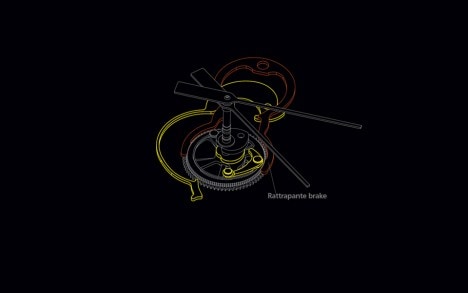
Mechanism with the hands split. The isolator has pulled the gallet away from the heart and the brakes have been applied to the rattrapante hand’s wheel.
L-EVOLUTION R’S CASE INTEGRATES CARBON FIBER AND GOLD.
Quickly, following its watchmaking debut the flyback function became prized by pilots and this aviation feature has been included in the L-evolution R.
An additional important and useful complication is offered by the L-evolution R, Blancpain’s large date module, known internally as the caliber 69. This large date construction distinguishes itself from the mainstream in that its changes occur instantly within a minute or two of midnight. It adds the further convenience of rapid correction via the crown, rather than a pusher on the side of the case.
With this level of sophistication in the movement, Blancpain determined to unveil a new style of decoration of the bridges. Eschewing the standard côtes de Genève and perlage style, Blancpain created a new look by combining elements of two other classic watchmaking motifs: champlevé and grenaillage. The bridges are first “sculpted” removing material from the center, leaving a raised border at the edges. This is the traditional first step in champlevé decoration. Instead, however, of thereupon filling in the sculpted out center with another material— classic champlevé calling for enamel—Blancpain turned to the second motif, grenaillage. The inner surfaces are given a subtle graining, resembling a frosting. In the red gold version of the L-evolution R, the surface is gold plated; in the white gold version it is rhodium plated. In both cases the color palette of the movement resonates with the coloring of the gold elements of the case.
Carbon fiber plays an important role in the appearance of this newest member of the L-evolution Collection. The L-evolution case design allows for mixture of materials as the lugs and case back form an element distinct from other parts of the case. The integration of two separate elements brings with it a design freedom which is not ordinarily available with conventional case designs. With the L-evolution R Blancpain takes advantage of this freedom by fashioning the lugs, case sides and case backs in gold, either red or white, and the bezel out of carbon fiber. Industry mainstream carbon fiber elements, although light in weight, suffer from a degree of coarseness and fragility. Fashioned with a proprietary process, Blancpain’s carbon fiber elements avoid these perils as they are both refined and subtle in appearance and robust. Carbon fiber carries, as well, over to the dial and to inserts in the strap.
With the style echoing that of the racing Super Trofeo models which have preceded it, the L-evolution R brings a new level of sophisticated high watchmaking to the genre of sport chronographs.
